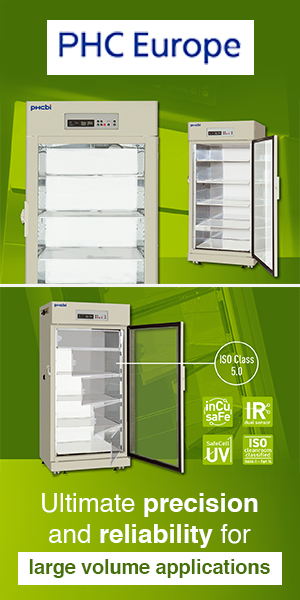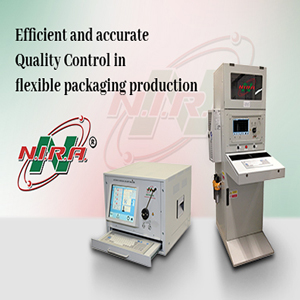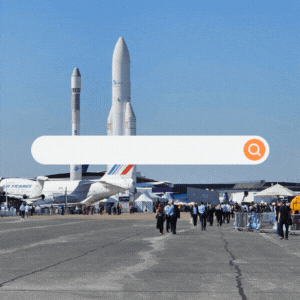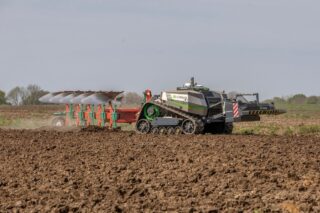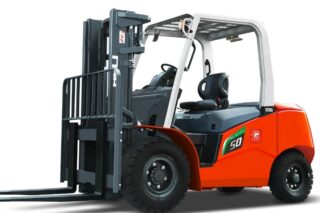The demand for transparency and accountability in supply chains is becoming increasingly critical for manufacturers. From environmental concerns to ethical labor practices, businesses are under pressure to verify and prove the origins of their raw materials and the conditions under which they were produced. And with increasing regulatory requirements, the need for traceable supply chains will continue to expand. Circulor offers innovative solutions to trace materials from their raw form (cobalt, lithium, nickel..) to finished products (car batteries, EVs, mobile phones). They are partnering with Rockwell Automation to offer traceability for auto, tire, and battery industries. DirectIndustry met with CEO Douglas Johnson-Poensgen to know more.
Circulor was founded on the belief that emerging technologies can solve age-old problems in supply chains, started CEO Douglas Johnson-Poensgen:
“Complex industrial supply chains pose challenges of distributed trust, whether it’s child labor in cobalt sourcing or deforestation tied to industries like nickel mining in Indonesia or rubber production. These issues represent risks that ultimately fall on the brand bringing products to market—whether it’s a tire or car manufacturer. Many of these challenges stem from problems embedded within their supply chain.”
The agri-food industry is no exception. Proof of this: the BBC recently revealed that tomatoes under the “Made in Italy” label, are sometimes harvested under inhumane conditions by Uyghurs subjected to forced labor in Xinjiang, China.
Under its leadership, Circulor uses blockchain, machine learning, and digital threading to address these challenges. By providing traceability, Circulor enables companies to manage risks associated with their supply chains. It also offers consumers more transparency about the products they purchase.
Core Innovations: The Digital Thread
Circulor’s key innovation is the digital thread, which tracks materials from their raw state to their final form, even as they undergo multiple transformations. Unlike products like food or diamonds, which remain relatively unchanged throughout their lifecycle, industrial materials such as cobalt, lithium, and nickel undergo significant chemical and physical changes.
“You start with raw material, like rock, which goes through seven or eight stages of physical and chemical transformation before becoming components, sub-assemblies, and eventually finished products. To address questions like whether child labor exists in your cobalt supply chain, you must reliably trace the material from its origin as rock all the way to the final battery. Seven years ago, no one had successfully built a digital thread capable of tracking raw materials through an entire supply chain.”
But Circulor has managed to capture this complex journey by integrating physical due diligence with digital surveillance, to ensure transparency and accountability. They have developed two mobile apps designed for use at mine sites. These enable the assignment of unique identities and geolocations to raw materials.
READ ALSO
How Does it Work?
Tracking materials from their source begins with assigning a digital identity to raw materials, whether they originate from mines or recycling sites. Circulor ensures traceability by digitizing the process at the outset.
In regions like the Congo or Rwanda, where artisanal mining predominates, the idea is to replace traditional paper-based “bag and tag” systems with these mobile apps. Circulor’s innovation also includes facial recognition, geo-tagging, and IoT-enabled devices. This transition eliminates human error and secures data integrity.
“No human enters any data at all. I don’t trust humans. I trust machines.”
For example, when a pit manager delivers materials to a crushing plant, the material is weighed on digital scales, its composition is analyzed with handheld mass spectrometers, and essential data—such as weight, composition, timestamp, and location—is automatically captured and linked to the batch’s digital identity. Payments are streamlined through mobile money systems, reducing theft risks. Tags on the bags remain inactive until authenticated on-site.
Traceability extends through the supply chain, particularly in tracking chemical transformations of raw materials. For example, Circulor can link nickel sulfate processed into precursors back to its original source material by analyzing the chemistry and mass balance of each process.
Anomalies and Fraud Prevention
Circulor’s technology is also designed to detect anomalies in supply chains, such as unexplained increases in material production or deviations in transportation routes. They rely on machine learning to continuously analyze this data. The detected anomalies serve as triggers for further physical inspection.
“If a pit manager operating near the edge of a site somehow produces three times more material than their peers, it’s a clear indicator that the material might be coming through unauthorized means. Similarly, if a lorry carrying 41 one-ton sacks of material leaves the mine site, follows an unauthorized route, makes unexplained stops, and arrives with broken bags, it raises significant questions about what happened along the way.”
Blockchain
To ensure supply chain integrity, Circulor incorporates blockchain technology for notarizing transactions, guaranteeing they are immutable and time-stamped. Although blockchain ensures tamper-proof records, the majority of data is stored in systems like Oracle databases in European data centers.
Regarding connectivity, the system is designed to function offline in remote areas, with private networks or microwave connections established to maintain reliability.
Ethics
To address concerns such as child labor, Circulor assured us that they have robust measures in place to ensure only authorized personnel work on-site.
“We use facial recognition to verify that the individuals managing materials at the site are authorized to be there, have agreed to the rules, and are operating within access-controlled areas.”
But for Douglas, no digital technology can fully replace physical due diligence. Certifiers and auditors still play a crucial role, conducting inspections at various points to assess conditions within the supply chain or calculate the lifecycle emissions of specific facilities.
“It’s the combination of periodic physical inspections and ongoing digital monitoring that provides confidence to downstream stakeholders.”
For him, this approach benefits all stakeholders, pit managers as well as miners:
“There’s no point digging rock out of the ground when no one’s going to buy it. So it’s a win win. And the mobile money is a win-win too, because it means that your miners are less likely to get robbed when they leave the mine site. You don’t have the problem of transporting very large amounts of cash to the site.”
Sustainability
This technology can also capture data on energy usage at refineries and working conditions at mine sites. This enables manufacturers to measure and reduce Scope 3 emissions and align with sustainability goals.
“If you’re a car manufacturer and you’re trying to reduce the total carbon footprint of your product, clearly you can’t manage what you can’t measure.”
From Conflict Minerals in Rwanda to EU’s Battery Passports
One of Circulor’s earliest successes was tracking tantalum, a conflict mineral, from Rwandan mine sites to the consumer market. In 2018, Circulor demonstrated this capability by digitizing the whole supply chain for tantalum. This innovation caught the attention of Volvo Cars, which subsequently partnered with Circulor to trace cobalt and other materials like lithium and nickel used in batteries.
Volvo’s EX90 SUVs, manufactured in South Carolina, USA, now come with QR codes that consumers can scan to access detailed information about the car’s battery.
That journey of tracking rock to battery is directly relevant to the requirements of a battery passport. The EU indeed introduced the European battery regulations which will soon make it mandatory for all industries to offer a digital passport for products from tires to textiles to consumer electronics and to car batteries.
Protecting Consumers
Each passport is aimed at providing information about the materials’ origins, levels of recycled content, and for the battery, their health and residual life. Battery passports are not just a tool for transparency. The primary aim is to protect second, third, and even fourth owners of EVs from being deceived by substandard components, such as counterfeit batteries, accident-damaged batteries, or those with little to no remaining useful life. By implementing this measure, the law seeks to prevent disadvantaged buyers from being exploited.
“We will not be able to sell cars in Europe without a battery passport after February 1, 2027. The same will apply to tires and consumer electronics.”
Circulor’s platform is already operational in China, demonstrating that even participants in highly scrutinized markets recognize the value of traceability to maintain access to global trade.
“Trade is strategic. This is not considered sensitive data. This is actually trade facilitation. The Chinese participants need to maintain access to the global market, and so you can choose not to play. But the reality is that CATL will not sell their batteries around the rest of the world unless they do this.”
READ ALSO
Safety
Trade is strategic and so is safety. Twice, three years ago and last month, General Motors (GM) had to recall several Chevrolet Bolt electric vehicles, due to a risk of battery-related fires. These recalls, which cost GM approximately $1.5 billion, were ultimately traced back to manufacturing faults in specific batches of batteries produced during a narrow time window. Responsibility for these defects was eventually shifted to LG Energy Solutions, the battery manufacturer.
The core issue lay in the inability to pinpoint the exact origin and destination of the faulty battery cells. The U.S. National Highway Traffic Safety Administration (NHTSA), which oversees automotive safety, mandates that manufacturers take the broadest possible measures to address safety risks. This means that if a company cannot precisely trace defective components—such as identifying the batch and the vehicles in which those components were used—it is forced to issue a blanket recall affecting every potentially impacted unit. This approach ensures safety but is extremely costly and inconvenient for manufacturers and consumers alike.
“Being able to trace a component’s journey from a tier-four or tier-three supplier to its integration into the final product can revolutionize safety and warranty recall procedures.”
Product genealogy extends far beyond the automotive industry. Similar traceability challenges arise in sectors like rail, shipping, aerospace, textiles and other industries where safety is paramount. This is why tools like digital product passports and technologies that connect manufacturing processes to the entire supply chain have become invaluable.
Collaboration with Rockwell Automation
Circulor is now collaborating with Rockwell Automation. The American leader plans to deploy this solution globally across the automotive, tire, battery, metals, mining, and cement industries through Kalypso, a consulting firm acquired by Rockwell.
Through Kalypso, Rockwell’s customers will be able to evaluate and address their supply chain needs effectively.


